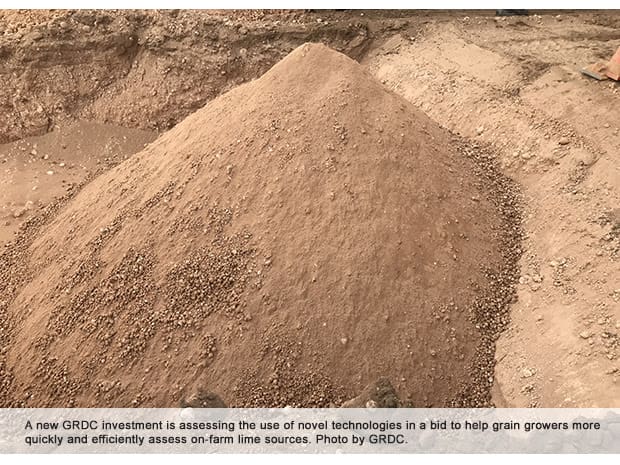
CAN technology such as ‘X-ray fluorescence’, already used in the mining industry, be applied by grain growers to more efficiently and cost-effectively identify naturally occurring lime sources on their farms?
A new Grains Research and Development Corporation (GRDC) project aims to answer this question and to assist growers in Western Australia’s eastern grainbelt to accurately analyse on-farm sources of lime that could potentially be used to ameliorate paddocks.
Soil acidity is Western Australia’s most expensive soil constraint, costing the State’s agricultural industry about $500 million each year.
GRDC grower relations manager – west, Jo Wheeler, said soil acidity was commonly treated using a source of carbonate, traditionally lime, transported to farms.

Jo Wheeler
“Usually sourced from the coast, traditional lime sources can be an expensive option for eastern grainbelt growers who live a long way inland and therefore have relatively high transport costs,” she said.
“In recent years, some growers in this region have utilised deposits of on-farm lime found naturally in some areas of heavy loam soil types.
“Currently, analysing potential on-farm lime sources involves assessing multiple sites on the proposed area and subjecting samples to a ‘fizz test’ with vinegar or an acid, to determine if the soil contains carbonate.
“Promising samples are then sent for analysis to determine their neutralising values, enabling growers to understand the economic value of spreading the product on acidic paddocks.”
Ms Wheeler said the new project was initiated after the GRDC Kwinana East Regional Cropping Solutions Network (RCSN) group identified that growers needed a better in-paddock testing method to efficiently and accurately identify lime sources, and provide information about their quality and characteristics.
The GRDC project will be conducted by GHD, a company specialising in engineering, architecture, environmental and construction services, and include analysis of technologies including XRF – an analytical technique used to determine the elemental composition of materials.
“As part of the work, a cost-benefit analysis will compare methods of sampling and testing on-farm lime sources, and the technology will then be calibrated for use by growers,” Ms Wheeler said.
She said if the project was successful, growers would still need to send samples away for laboratory testing.
“However, the initial on-farm sampling would be better targeted and more accurately identify sources with high neutralising value – meaning fewer samples would require further testing, reducing costs for growers.
“Laboratory testing would still be required to provide growers with a full picture of the substance, including its nutritional composition and the presence of any toxic substances.”
Source: GRDC

HAVE YOUR SAY